Cards In This Set
| Front | Back |
|
Carrier afficiency
|
Using benefit-cost analysis to determine the lost cost method of transportation
|
|
Comparative Advantage
|
The advantage of some nations or regions
to produce goods better and more cheaply
than less favoured nations or regions. This
comparative advantage leads to trade, as
nations exchange those goods which they
can produce more easily for goods not
readily produced at home
|
|
Cumulative Causation
|
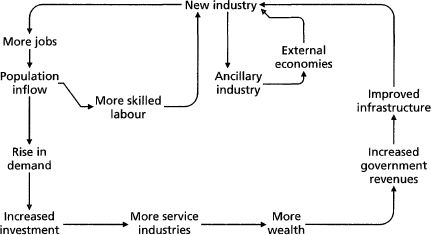 The unfolding of events connected with a change in the economy. These changes apply to a whole set of variables as a consequence of the multiplier effect. Thus, the location of a new factory may be the basis of more investment, more jobs both in that factory and in ancillary and service industries in the area, and have a better infrastructure which would, in turn, attract more industry. The figure illustrates cumulative causation as envisaged by G. Myrdal (1957). |
|
Deglomeration
|
The movement of activity, usually industry, away from areas of concentration. Deglomeration occurs when the advantages of agglomeration are outweighed by its disadvantages: high land costs and rents, constricted sites, congestion, and pollution. The 1980s, for example, saw the movement of a number of major firms out of New York city.
|
|
Deindustrialization
|
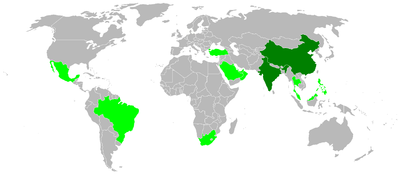 Deindustrialization (also spelled deindustrialisation) is a process of social and economic change caused by the removal or reduction of industrial capacity or activity in a country or region, especially heavy industry or manufacturing industry. It is an opposite of industrialization. |
|
Economic Sectors
|
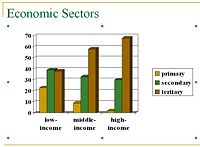 The economy may be classified into subdivisions called sectors also called industries in several ways. Sectors may be further subdivided into subsectors. |
|
Economies of scale
|
The benefits of producing on a large scale. As the volume of production increases, the cost per unit article decreases.
|
|
Ecotourism
|
The development and management of tourism such that the environment is preserved. The income from tourism adds to the investment into landscape conservation. J. Colvin
|
|
Energy resources
|
Sources and methods by which energy can be tapped or produced
|
|
Entrepot
|
Also known as a free port, this is a point of transhipment between nations where goods are held without incurring customs duties. Examples include Singapore and Rotterdam.
|
|
Export processing zone
|
Is a a region where a group of countries has agreed to reduce or eliminate trade barriers
|
|
Fixed cost
|
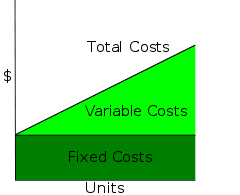 fixed costs are business expenses that are not dependent on the activities of the business |
|
Footloose industry
|
An industry whose location is not influenced strongly by access either to materials or markets, and which can therefore operate within a very wide range of locations. Any form of ‘direct line’ business, operated almost entirely through telephone and fax lines.
|
|
Four Tigers
|
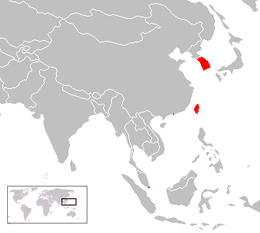 The term Four Asian Tigers or Asian Tigers refers to the highly industrialized economies of Hong Kong, South Korea, Singapore, and Taiwan. |
|
Greenhouse Effect
|
The earth's atmosphere traps solar radiation, caused by the presence in the atmosphere of gases such as carbon dioxide, water vapor, and methane that allow incoming sunlight to pass through but absorb heat radiated back from the earth's surface.
|



